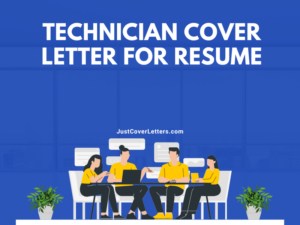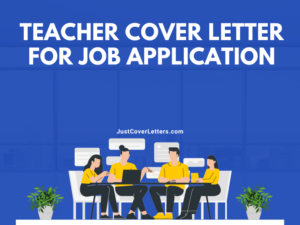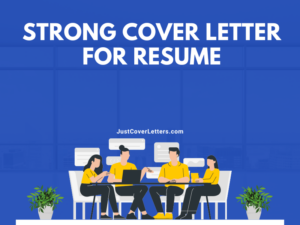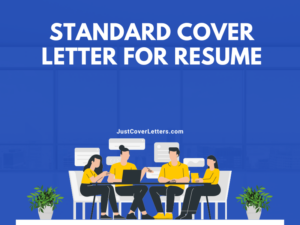How to Write a Cover Letter to Reapply for a Job at a Company That You Have Already Worked For
- Cover Letters
- ')" data-event="social share" data-info="Pinterest" aria-label="Share on Pinterest">
- ')" data-event="social share" data-info="Reddit" aria-label="Share on Reddit">
- ')" data-event="social share" data-info="Flipboard" aria-label="Share on Flipboard">

How to Respond to the Interview Question: Why Did You Resign?
How to cancel a job offer you've accepted, how to accept a job politely.
- How to Leave a Long-Term Job
- Good Examples of Why You Would Like to Work for an Employer
It can be a small world, and at some point in your career, you may find yourself trying to go back to a company you previously worked for. As long as you weren’t terminated for misconduct or poor performance, you likely have an “in” with the company that you can capitalize on in a re-introductory cover letter.
Why Did You Leave?
It’s important to take stock of why you left before you try to write a cover letter to reapply for a job with a company you’ve already worked for. You may have left because of a toxic corporate culture, because there was no room for advancement, you didn’t like the compensation package or you disagreed with management decisions. It's important to consider if anything may have changed that would make the second go-around a worthwhile pursuit. If you still have contacts inside the company, consider them as valuable resources, both for getting an inside scoop and possibly even pushing your resume into the right hands.
If You Were Downsized
If you were downsized for no reason other than corporate restructuring, you theoretically left on better-than-average terms. In your letter, discuss what you liked about working for the company and why you would like to return.
W__hile it was difficult to be let go last year when the company restructured, the organization remains one of the best I’ve ever worked for. In the past several months, I’ve been doing consulting work, and when I noticed you have a new position open in sales, I thought I’d reach out to see if you still consider me a good fit for the organization.
If You Left for Another Job
If you moved on from the company to pursue another opportunity, particularly a job that was a step up, there shouldn’t be any hard feelings with your previous employer. Be honest about why you would like to come back in a new or similar capacity.
As you know, I couldn’t pass up the opportunity to run my own team when I was offered a job at ABC Co. While I learned a great deal there, I must admit, I miss the cohesive team environment of XYZ Co. I understand you’re looking for someone to run the new community relations division, and I would love the opportunity to be considered for the role.
If You Left for School
If you left a job to further your education, you have a lot of advantages for a rehire request. Emphasize what you liked about working there, what you have learned and how you anticipate utilizing your education if you’re invited to return.
It was such a pleasure working with ABC Co. back in 2016. While I opted to take the last two years away from work to complete my MBA, now that it’s completed, I’d love to be able to utilize my newfound skills in the accounting department. I understand you are hiring right now, and I would be most appreciative of an interview.
If You Left for Personal Reasons
If you left your old job to raise a family, tend to an elderly relative or even travel or explore self-employment, it’s perfectly acceptable to reference that time in your cover letter.
As you are aware, I decided it was important to be home with my girls when they were toddlers. Now that they are in preschool, I’m incredibly excited about re-entering the workforce, and I can think of no place I’d rather be than back at ABC Co. Could I make arrangements to visit HR sometime in the near future?
Capitalize on Your History
When communicating with your previous employer in your cover letter, stress the value of your knowledge of the company, your existing in-house networks and highlight any new skills you bring to the table.
I believe I can be an asset to the organization because I have a solid understanding of strategic objectives, I'm familiar with the board of directors and I know all of the internal routing systems and best practices.
Conclude your cover letter by making a request for a meeting or for re-hire consideration. As with any professional correspondence, note any attachments, such as resume or references and include all relevant contact information.
- Forbes: 8 Tips For Getting Rehired By A Former Employer
- Fast Company: Five Steps to Getting Rehired by a Former Employer
Lisa McQuerrey has been an award-winning writer and author for more than 25 years. She specializes in business, finance, workplace/career and education. Publications she’s written for include Southwest Exchange and InBusiness Las Vegas.
Related Articles
How to write a reinstatement letter, reasons for applying to a job, declining a job offer due to pregnancy, the best ways to quit your job if you love your manager, good answer to the question "why would you want to return to a former job", how to write a letter requesting a job back, examples of prepping for an internal interview, how to write a letter requesting part time hours, how to tell your employer you are leaving to go back to school, most popular.
- 1 How to Write a Reinstatement Letter
- 2 Reasons for Applying to a Job
- 3 Declining a Job Offer Due to Pregnancy
- 4 The Best Ways to Quit Your Job if You Love Your Manager

Cover Letter for Returning to Previous Employer
When returning to an old employer, it is important to ensure that your cover letter reflects the changes in your career and the skill set you possess. In addition, be sure to highlight any accomplishments or developments since leaving the company. Finally, focus on why you believe you would be a valuable asset to the company.

There are a few reasons why you might want to write a cover letter when returning to your previous employer. First, it can help you establish credibility with your new employer.
Second, it can show that you’re keen to return and contribute to the team. Finally, a well-written cover letter can help you stand out from other candidates and increase your chances of being offered the job.
Dear Sir or Madam,
I am writing to apply for the open position of Research Assistant at [company name]. I was an instrumental part of the research team at [company name] and enjoyed working closely with the other members of the team. I have since moved on to other endeavors, but am confident that I would be a valuable asset to your organization once again.
I would be more than happy to provide additional information, such as my resume and a list of references, if needed. In addition, I am available for an interview should you wish to discuss my qualifications further.
Thank you for your time and consideration.
[Your Name]
If you’re looking to return to your previous employer, there are a few things you should keep in mind. First, make sure your resume is updated to reflect your new position and company.
Second, be prepared to answer any questions your interviewer might have. Finally, be honest and respectful when discussing your departure from the company – it will show that you took the necessary steps to ensure a smooth transition.
If you’re returning to a previous employer, there are a few things to keep in mind when writing your cover letter. First, be sure to express your excitement about coming back and emphasize how your previous experience with the company will be an asset in your new role.
It’s also important to be honest about why you left in the first place and to reassure your potential employer that the same situation won’t happen again. Finally, be sure to highlight your skills and experience that have been gained since you were last with the company and how they will benefit the organization in your new role.
By following these tips, you can write a cover letter that will help you get the job you want with your previous employer.
In conclusion, if you have left your previous employer and are considering returning, it is important to have a well-written cover letter that highlights your skills, why returning would be advantageous to the company, and how you would contribute to the team. Make sure to include your resume and contact information so that the employer can contact you for an interview.
Other Cover Letter:
Cover Letter for Plant Job Cover Letter for After Interview Cover Letter for a Start Up Cover Letter for Attorney General Office Good Cover Letter for a Graduate Cover Letter for a Job in Quality Job Application Cover Letter for Sales Associate Cover Letter for a Science Job Cover Letter for Fast Food Cover Letter for a Club
Related Posts

Technician Cover Letter for Resume

Teacher Cover Letter for Job Application

Strong Cover Letter for Resume

Standard Cover Letter for Resume
Letter Templates & Example
Cover Letter for Returning to Previous Employer: Free Template and Tips

Hey there fellow job seekers, have you ever considered returning to a previous employer? It can be a great option if you’re looking for a new opportunity but still want to work for a company you’re familiar with. However, it’s important to make a good impression when reaching out to them about a potential position. That’s where a cover letter for returning to previous employer template can come in handy. With this template, you can find examples and edit them as needed to create a personalized cover letter that highlights your strengths and why you’re the perfect fit for the job. So why not give it a shot and see where it takes you? Let’s dive into the world of cover letters for returning to previous employers!
The Best Structure for a Cover Letter for Returning to a Previous Employer
Welcome back! So, you’ve decided to return to your previous employer, and now you’re wondering how to craft the perfect cover letter. Fear not, we’re here to help! A cover letter is your chance to showcase your skills and express your interest in the position. Here’s the best structure to follow:
Paragraph 1: Introduction Start by mentioning your previous position and briefly explaining why you left. Then, express your excitement to be applying for a position with the company again. Be enthusiastic and show that you’re genuinely interested in returning to work with the organization.
Paragraph 2: Highlight Your Achievements In this paragraph, you should highlight your previous accomplishments and how they align with the company’s goals. Use specific examples of projects you led or milestones you achieved. By doing this, you’re demonstrating that you understand the company’s needs and can contribute positively to the team’s efforts.
Paragraph 3: Explain What You’ve Been Doing Since Leaving In this paragraph, explain any additional experience or qualifications you have gained since leaving. Highlight any relevant training or skills you have acquired since leaving the company. You want to demonstrate that you have been active in your career and stayed current in your field.
Paragraph 4: Express Your Interest In the Position Here, you want to convey your excitement for the position and why you feel you would be the best fit for it. Explain how your skills and experience make you the ideal candidate for the job. Make sure you tailor your language to fit the job description and the company’s culture.
Paragraph 5: Wrap Up and Thank Them In your final paragraph, thank the company for their time and consideration. Reiterate your enthusiasm for the position and express your desire to speak with them further about the opportunity. Provide your contact information and express your willingness to help with any additional questions.
And that’s it! Follow this structure, and you’ll have a well-crafted cover letter that will impress your previous employer and land you the job. Good luck!
7 Sample Cover Letters for Returning to Previous Employer
Sample 1: returning after personal leave.
Dear [Manager’s Name],
I hope this letter finds you well. I recently took a brief personal leave from my position at [Company Name] due to a family matter that needed my full attention. Although it was a difficult decision to make, I knew it was important to prioritize my family.
During my absence, I realized how much I enjoyed working with the team at [Company Name] and how much I valued the relationships I have built with everyone. I am excited to return to work and continue contributing to the success of the company.
Thank you for your understanding during this time. I look forward to hearing from you and hope to return to my position as soon as possible.
Best Regards,
[Your Name]
Sample 2: Returning After Pursuing Higher Education
I hope this letter finds you in good health and high spirits. It gives me great pleasure to express my interest in returning to [Company Name] after completing my higher education.
The knowledge I have gained during my time away has equipped me with new skills that will undoubtedly benefit the company. My experience has also deepened my appreciation for the company’s culture, mission, and people, as well as highlighted the strengths that make [Company Name] a fantastic place to work.
I am thrilled to take what I’ve learned and apply it as I return to [Department Name] as a [Job Title]. I greatly appreciate your consideration and the opportunity to rejoin the team at [Company Name].
Thank you once again for your time and consideration. I look forward to hearing from you soon.
Sample 3: Returning After Being Laid Off
I hope all is well with you and the team at [Company Name]. I am writing to express my interest in returning to my previous role as [Job Title] after being laid off due to the pandemic.
My time at [Company Name] was immensely gratifying, and I have always admired the company’s values and commitment to excellence. Since my departure, I have continually followed the company’s growth journey and have become even more enthusiastic about the exciting initiatives undertaken by the company.
As an experienced and skilled [Job Title] professional, I am confident I can make a valuable contribution to the [Department Name] team. I am eager to be part of the organization’s progress and growth as we navigate the post-pandemic world.
Thank you for considering my application. I look forward to discussing how I can support [Company Name] using my skills and expertise.
Sample 4: Returning After a Career Break
I hope this letter finds you well. I am writing to express my interest in returning to [Company Name]. I had previously worked as [Job Title] before taking a career break to focus on personal issues.
The time away from work has reminded me of my passion for my field and the many contributions I can make to [Company Name]. My experience and skills will undoubtedly assist me in assuming the responsibilities of my previous role.
Working with [Company Name] was a great experience, and I cherish the relationships I developed with my colleagues. It would be a pleasure and an honor to return to the organization.
I appreciate your time and consideration. I look forward to the opportunity to come in for a meeting and discuss my application.
Sample 5: Returning After Relocation
I hope this letter finds you in good health and spirits. Since my move to [Location], I have reflected on my career and what I want for my future. One thing that has become clear to me is that I miss the team at [Company Name].
I enjoyed working as [Job Title] in [Department Name] and have found myself recalling the camaraderie and fulfillment it brought me. Therefore, I would like to express my interest in rejoining [Company Name] as a [Job Title].
In particular, my familiarity with the organization will be a significant asset in my transition back to the team. I am eager to bring my experience and skills to [Company Name] and look forward to making a positive contribution to the organization’s future.
Thank you for your support and consideration; I look forward to hearing from you soon.
Sample 6: Returning After Maternity Leave
I hope this letter finds you in good health and spirits. I am writing to express my interest in returning to work as [Job Title] at [Company Name] after an extended maternity leave.
While taking care of my newborn has been the greatest joy of my life, I also miss my professional life and the joy and satisfaction it brings me. I miss being a part of the team at [Company Name] and engaging in our collective pursuit of excellence.
I am excited to return to work and apply the skills and knowledge gained during my leave to contribute to the company’s growth and success into the future. I am confident that my renewed enthusiasm and dedication will enable me to perform my duties as a [Job Title] to the highest standard.
Thank you for considering my request. I look forward to hearing back from you and resuming my work as part of the team at [Company Name].
Sample 7: Returning After Health Issues
I hope this letter finds you in excellent health. I am writing to express my interest in returning to work as [Job Title] at [Company Name] after recovering from my health issues.
I am immensely grateful for the support and understanding shown by the company during my health-related absences. My experience with [Company Name] has always been positive and enjoyable, and my colleagues are among the best I have had the pleasure of working with.
Returning to work with the company would be a dream come true. I miss the company’s daily routines, the challenges it posed, and the achievements we celebrated. As a [Job Title], I promise to work diligently and contribute my knowledge and skills to the best of my ability to achieve our collective goals.
Thank you so much for your consideration, and I am eagerly looking forward to hearing back from you soon.
Tips for Writing a Cover Letter to a Previous Employer
Returning to a previous employer may seem like a bit of a daunting task. However, it is not impossible. Writing a cover letter is a crucial step in the process of reaching out to your previous employer. The cover letter is your chance to express your interest in the job and explain why you are the right fit. Here are some in-depth tips to make writing the cover letter to your previous employer a success
- Avoid being presumptuous: When writing a cover letter, avoid assuming that the job is yours automatically. It is essential to communicate your skills and achievements to show what value you bring to the organization you are applying to. Be confident but not presumptuous.
- Highlight what has changed since you left: Whether you left to pursue other career opportunities or to take a break from work, you must acknowledge what has changed in your life. This way, the hiring manager can understand why you are applying again. Your time away from the organization might have equipped you with new skill sets and experience, which would make you an ideal candidate for the job.
- Address why you left: If you left the company on good terms, it is essential to highlight that. If you left for a negative reason, such as a family emergency or a health issue, it is essential to address that in your cover letter. This helps the employer to understand why you left and why you are applying again.
- Show your enthusiasm: When applying for a job, it is crucial to show your enthusiasm and passion for the position. Employers are more likely to hire someone who is excited about the job and the organization. Be sure to express your enthusiasm in your cover letter.
- Customize your cover letter: Even if you are returning to your previous employer, it is important to customize your cover letter. Do not use the same cover letter you used when you applied years ago. Take the time to update your cover letter and make it specific to the job.
In conclusion, writing a cover letter to a previous employer is all about being authentic and transparent. Addressing why you are applying and why you left is essential. Highlighting your achievements and skills and showing your enthusiasm will also help you to increase your chances of securing the job. Remember to take your time to craft a customized cover letter that will show the hiring manager that you are the perfect candidate for the job.
FAQs related to Cover Letter for Returning to Previous Employer Template
1. What is a cover letter for returning to a previous employer?
A cover letter for returning to a previous employer is a document that you send to the company you previously worked with to express your interest in returning to work with them.
2. Why is it important to write a cover letter when returning to a previous employer?
Writing a cover letter when returning to a previous employer is important because it shows that you are serious about wanting to come back and work for the company. It also allows you to remind the employer of your professional skills and experience.
3. What should I include in my cover letter for returning to a previous employer?
In your cover letter for returning to a previous employer, you should include your reasons for leaving the company, your reasons for wanting to come back, and any updates on your professional experience and achievements since you left the company. You should also express your enthusiasm for rejoining the company.
4. How should I address my cover letter when returning to a previous employer?
When addressing your cover letter for returning to a previous employer, you should include the name and job title of the person who will be reading your letter. You can address the letter to them personally, or to the human resources department.
5. How should I format my cover letter for returning to a previous employer?
Your cover letter for returning to a previous employer should follow a standard business letter format, including your name and contact information, the date, the employer’s name and contact information, and a formal greeting and closing. You should also use a professional font and format the letter in a way that is easy to read.
6. What tone should I use in my cover letter for returning to a previous employer?
You should use a polite and professional tone in your cover letter for returning to a previous employer. Express gratitude for the opportunity to work with the company in the past, and express your sincere interest and enthusiasm for returning to work with them.
7. How can I personalize my cover letter for returning to a previous employer?
To personalize your cover letter for returning to a previous employer, you can mention specific projects or accomplishments from your previous tenure with the company that showcase your skills and experience. You can also reference any personal connections or relationships you have with current employees or management.
Thanks for stopping by!
We hope this template helps you as you consider returning to work for a previous employer. Remember, a cover letter is a great way to showcase your skills and enthusiasm for a job opportunity. Make sure to tailor your letter to the specific job and company, and don’t forget to proofread before sending it off. Good luck in your job search! And be sure to come back soon for more career and job search advice.
10 Key Elements to Include in Your Employment Contract Sample Nigeria How to Write an Effective Employment Letter Request Sample Effective Sample of Guarantor Letter for Job Employment: How to Write One Effective Employment Follow-Up Letter Template for Post-Interview Success Top Employment Thank You Letter Templates to Boost Your Career Success How to Create a Professional Self Employment Letter Template
Cover Letter to Previous Employer
A Cover Letter to a Previous Employer is a letter written by a former employee to their former employer. Its purpose is to express interest in returning to the company or inquiring about potential job opportunities.
In this article, we will provide you with templates and examples of Cover Letters to Previous Employers. These samples will serve as a guide to help you craft your own letter, whether you are seeking reemployment or simply exploring options.
With our samples, you can easily customize the letter to suit your specific needs and convey your interest and qualifications effectively.

Sample of a Cover Letter to Previous Employer
[Your Name]
[Your Address]
[City, State, Zip Code]
[Email Address]
[Phone Number]
[Previous Employer’s Name]
[Company Name]
[Company Address]
Dear [Previous Employer’s Name],
I hope this letter finds you well. I am writing to express my interest in the possibility of returning to [Company Name] in a [mention the type of position] capacity.
During my time at [Company Name], I greatly valued the opportunities for growth and development that were afforded to me. I believe that my skills and experiences align well with the needs of [Company Name], and I am eager to contribute to the continued success of the team.
Thank you for considering my application. I am looking forward to the possibility of rejoining the [Company Name] family and contributing to its ongoing success. Please feel free to contact me at [Your Phone Number] or [Your Email Address] to discuss this opportunity further.
How to Write a Cover Letter to Previous Employer
Writing a cover letter to a previous employer can be a strategic way to express your interest in returning to the company or inquire about potential job opportunities. Here’s how to write a compelling cover letter:
1. Start with a Strong Opening:
Begin your cover letter by addressing the previous employer by name and expressing your interest in returning to the company. Mention the position you are interested in and briefly explain why you are a good fit.

2. Highlight Your Achievements:
In the body of your cover letter, highlight your key achievements and experiences from your previous tenure at the company. Provide specific examples of projects you worked on and contributions you made.
3. Express Your Continued Interest:
Clearly state why you are interested in returning to the company. Mention any positive experiences you had while working there and explain how you believe you can contribute to the company’s success in the future.
4. Address Any Changes:
If there have been any changes since you left the company, such as acquiring new skills or experiences, mention them in your cover letter. Explain how these changes make you an even stronger candidate than before.
5. Request an Interview:
Close your cover letter by expressing your desire for an interview to discuss your application further. Provide your contact information and indicate your availability for an interview.
6. Proofread Carefully:
Before sending your cover letter, proofread it carefully to ensure there are no grammatical or spelling errors. A well-written cover letter enhances your professionalism and credibility.
7. Follow Up:
After sending your cover letter, consider following up with the employer to ensure they received it and to express your continued interest in the position.
Tips and Tricks
Here are some tips and tricks to keep in mind while writing a cover letter to a previous employer:
1. Personalize Your Letter:
Address the cover letter directly to your previous employer by name to show that you have taken the time to tailor your application.
Emphasize any key accomplishments or successes from your previous tenure at the company to demonstrate your value as a candidate.
3. Express you’re Enthusiasm:
Clearly express your enthusiasm for the opportunity to return to the company and explain why you are eager to rejoin the team.
If there have been any changes since you left the company, such as acquiring new skills or experiences, mention them in your cover letter to show your growth.
5. Focus on the Future:
Instead of dwelling on the past, focus on how you can contribute to the company’s future success and growth.
6. Be Concise:
Keep your cover letter concise and to the point, focusing on the most relevant information and avoiding unnecessary details.
7. Proofread Carefully:
Before sending your cover letter, proofread it carefully to ensure there are no grammatical or spelling errors, which can detract from your professionalism.
FAQs about a Cover Letter to Previous Employer
When writing a cover letter to a previous employer, it’s important to address key questions that job seekers often have. Here are some frequently asked questions about this topic:
1. How do I address a cover letter to a previous employer?
– When addressing a cover letter to a previous employer, use the employer’s name and position title, if known, followed by the company’s name and address. For example, “Dear [Employer’s Name], [Company Name].”
2. What should I include in a cover letter to a previous employer?
In a cover letter to a previous employer, include a brief introduction expressing your interest in returning to the company, highlight relevant skills and experiences, and explain why you are a good fit for the position.
3. How do I mention my previous tenure at the company in the cover letter?
Mention your previous tenure at the company in the cover letter by briefly summarizing your past role and contributions, and explaining how your experience makes you a valuable asset to the company.
4. How can I show enthusiasm for returning to the company in the cover letter?
Show enthusiasm for returning to the company in the cover letter by expressing your excitement about the opportunity to rejoin the team and contribute to the company’s success.
5. Should I follow up after sending a cover letter to a previous employer?
Yes, it’s a good idea to follow up after sending a cover letter to a previous employer to ensure they received it and to express your continued interest in the position.
30 Day Notice Letter to Employer
2 Week Notice Letter to Employer
Notice of Retirement Letter to Employer
Resignation Letter Due to Moving
Leave a Comment Cancel Reply
Your email address will not be published. Required fields are marked *
Save my name, email, and website in this browser for the next time I comment.
- Get the Job
- Resumes and CVs
- Applications
- Cover Letters
- Professional References
Professional Licenses and Exams
- Get a Promotion
- Negotiation
- Professional Ethics
- Professionalism
- Dealing with Coworkers
- Dealing with Bosses
Communication Skills
Managing the office, disabilities, harassment and discrimination, unemployment.
- Career Paths
- Compare Careers
- Switching Careers
- Training and Certifications
- Start a Company
- Internships and Apprenticeships
- Entry Level Jobs
- College Degrees
Growth Trends for Related Jobs
How to write a resume cover letter to reapply for a job.

When you submit your resume for an open position, it's important to include a cover letter . The cover letter gives details about your work experience, indicates why you're interested in a specific position, and lets the employer know that you're including your resume for review. When you're reapplying for a job, your cover letter also explains why you're doing so and what you can now offer the employer, in terms of experience, that you couldn't before.
Type your address at the top of the cover letter. Underneath it, put the date you plan to send the cover letter. Underneath the date, type the name of the employer, his or her title, the company name, and the company address.
Start your cover letter with a professional greeting addressed to the recipient, such as "Dear Ms. Jones." Try to find out the name of the person you're sending the cover letter to. You can check the job ad or call the company. If you can't find out the name of the person you're writing to, you can type a more generic greeting, such as "Hello," "To Whom It May Concern" or "Dear Sir or Madam."
In the first paragraph, state the name of the position you're applying for and how you heard of the open position.
In the second paragraph, explain when you applied for the position before and why you've decided to reapply. Include details about the experience you've had since you applied before. Show the employer that you now have more relevant experience or education and that you're better prepared for the challenges of the job. For example, your new experience may include working in a similar position, completing an internship, or earning an educational degree.
In a separate paragraph, state your most relevant skills. These may be repetitive from your previous cover letter, but include them as long as they are still relevant to the position. For example, you might list your computer skills and ability to operate certain types of equipment. For positions that deal directly with customers and clients, list interpersonal and communication skills.
In the last paragraph, thank the recipient for his or her consideration and for reviewing your cover letter and resume. State when you're available to interview and when you can start working. You might also say that you're glad the position reopened and that you're excited at the prospect of working for the company.
End your cover letter with a professional closing such as "Sincerely." Type your name a few spaces below that. Between the closing and your typed name, include your signature if you are planning on printing the cover letter.
Related Articles
How to format a resume if you're returning to a previous employer →.

How to Write a Cover Letter to a Company That Does Not Have a Job Opening →

How to Write a Letter of Intent for Work →
How to write a cover letter when re-entering the nursing field →.

How to Write a Letter Requesting a Future Job Opening →

How to Write Job Application Letters →

J. Johnson has been completing freelance writing work since September 2009. Her work includes writing website content and small client projects. Johnson holds a degree in English from North Carolina State University.
ijeab/iStock/GettyImages
- Job Descriptions
- Law Enforcement Job Descriptions
- Administrative Job Descriptions
- Healthcare Job Descriptions
- Sales Job Descriptions
- Fashion Job Descriptions
- Education Job Descriptions
- Salary Insights
- Journalism Salaries
- Healthcare Salaries
- Military Salaries
- Engineering Salaries
- Teaching Salaries
- Accessibility
- Privacy Notice
- Cookie Notice
- Copyright Policy
- Contact Us
- Find a Job
- Manage Preferences
- California Notice of Collection
- Terms of Use
- International edition
- Australia edition
- Europe edition

Want your old job back? Here's how to return to a former employer
From approaching your old boss to writing a CV and cover letter, Dave Smith shares his advice on making your return a success
- Seven easy ways to improve your CV
- Three excellent cover letter examples
- Looking for a job? Explore the range of vacancies on Guardian Jobs and find the perfect role for you
T here are many reasons why you may consider approaching a previous employer with a view to returning to familiar shores. Whether it's because your new role isn't quite living up to expectations, the lure of a coveted position which was previously out of reach suddenly becoming available, or simply because you miss your former colleagues. Whatever the reason, you'll need a carefully planned strategy to make sure your homecoming is a success.
Is it possible to go back?
Obviously, if you left under a cloud, then your options may not be as plentiful, but if you left to the sound of much back-patting and a "come back anytime" promise then you could be in business.
Research is always good. Test the water before making your final approach, a few discreet enquires to trusted former colleagues will tell you whether it is an appropriate time to return, and could help you prepare much better than going in blind.
Something else that you should think seriously about is whether you can commit to going back long-term. If you were successful, but then you have a serious bout of déjà vu in your second week – suddenly remembering why you left in the first place – leaving the firm again could spell the end of any good relationship you may have had up until that point, and the boss may not think as favourably about you if ask for a reference.
Making your approach
So, you have decided to venture back across the bridge. If you have only been gone a short time, you could just get back in touch with your ex-boss and let him or her know that you have made a mistake. Send an email though. A telephone call may put them on the spot, so give them space, and give them a chance to have a meeting to discuss the possibility.
If you have been away from the company for a while, do your homework. Is the boss the same person or someone new? A quick phone call to reception will confirm this.
As you have been there before, they know what you did, how well you performed and why you left. There's therefore no need to get too creative about what you have already contributed. Although, if there is a change of manager, you should be prepared for the dreaded "reason for leaving" question in the interview.
As well as highlighting your best achievements, focus on what skills you have picked up since leaving and more importantly, how you are now an even better asset to the firm than you were before. Don't assume it is a foregone conclusion that you will be welcomed back – you will still need to prove yourself.
Your cover letter
This is where all your preparation comes together. If you don't prepare adequately and the boss has changed, at best, your email will bounce back to you, or spend the rest of eternity in cyberspace. At worst, the new manager will receive it, and your opportunity to make a good first impression is gone.
The content of the letter should be fairly formal, you can definitely direct their attention to your former tenure with the firm, but don't dwell on it. Rather like your CV, focus on how you are now an even greater asset to the firm.
Direct the reader's attention to your CV, but don't repeat content that is already mentioned there. You could pre-empt the "reason for leaving" question in your letter, but if you do, you should state clearly why you want to come back.
A final tip on the actual application: get someone to read it over for you, an objective view is often the thing you need to make sure that the overall flavour of your approach is likely to be well received.
Preparation checklist
Before you even put pen to paper you should check that you have done everything as follows.
A bit obvious, but check the company website, you are likely to either learn a few things, or have confirmed what you already know about the firm.
Open (if you haven't already) a LinkedIn account and reach out to some people who could give you some basic information about the changes that have occurred while you have been away.
If there are still a few gaps in your research after you have done this, you may have to pick up the phone to find out who you need to approach.
David Smith is a job search consultant at Careervisa.co.uk .
This content is brought to you by Guardian Professional . To get more content and advice like this direct to your inbox, sign up for our weekly update and careers ebook.
- Guardian Careers
- The Careers Blog
- Covering letters
- Applications
- Work & careers
Comments (…)
Most viewed.

- For Companies & Teams
- Buy Products
- Help & Support
For Individuals
Unlock the world's most advanced digital business card
Manage your team's digital business cards
- Best Sellers
- Custom Accessories
- Bundle & Save
- Shop By Collection
- Why Choose Popl?
- Popl Partners
- Documentation
- FAQ & Tutorials
- Help Center
- Custom Card
- Popl Metal Card
- Popl Duo Bundle
- Popl Card Lux
- Popl PhoneCard™
- Popl Rope Band
- Custom PhoneCard™
- Custom Metal Card
- Custom Badge
- Popl Card 3-Pack
- Popl Card 5-Pack
- Popl Card 25-Pack
- Popl PhoneCard™ 3-Pack
- Popl PhoneCard™ 5-Pack
- Back of Phone
- For Businesses & Events
Your cart is empty
How to Write a Cover Letter When You’re Changing Careers (or a New Grad)
Apr 16, 2024
By Nancy Koziol

Across the world, people as young as 15 are put in the position of choosing the line of work they'd like to pursue. At this early age, we're barely beyond aspiring to be astronauts or superheroes. Forced to choose, be it during the early teen years outside of the US or the late teens and early twenties in the US, many of us find ourselves in one of two positions. Either we decide changing careers is the right move, or we're entering the workforce with zero experience and approaching a job application. We discussed how to craft a resume if you find yourself in this position but didn't cover the other half of the application equation. How is it possible to accomplish writing a cover letter with no experience? That's today's topic.
Stats on Career Changers
Career changes are more common than you might think.
- 70% of the workforce is actively seeking a career change . That's not a typo! Most people seek a change in their career path. In 2020, 87% of people under 25 were considering a career change . The five most common reasons for changing careers probably won't surprise you.
- Most (41%) consider leaving because their employer ignored their distress during the pandemic .
- In 2020, the main reason people considered changing careers was to make more money . That accounted for 39%.
- 27% of people change careers for improved work-life balance . This was the #1 reason in 2021.
- 26% of workers planned to change careers once the pandemic ended . This likely links back to the fact that many felt their employers weren't responsive to the significant emotional toll the pandemic took.
- 22% of workers wanted to leave their career to start a business . A bold, but fairly common move!
Understanding the Career Change Cover Letter
When changing careers, or as a new entrant into the job search, it's common to have to submit a well-crafted cover letter and resume to hiring managers.
There are several approaches to this task. Some people choose to introduce themselves and turn their resume into a narrative. Most hiring managers find these resumes at best boring and, at worst, lazy.
Candidates can capture the reader's attention by drafting a personalized cover letter that illustrates how the candidate fits the position. This can be communicated through sharing quantified metrics, platform fluency and relevant skills.

But what about when you're a new grad or career changer? Here, the key is showing prospective employers what you bring to the table while not drawing attention to the fact that you're lacking experience.

An Effective Cover Letter Hooks the Reader
We're not suggesting you do anything too outside of the box for your cover letter, but if you're in the position we're discussing today, it's important to take a bold approach to your cover letter.
The most important thing, just like when crafting a resume, is to understand what the company's values are and what skills match you and the position. There are two ways to discover this information.
Research Your Prospective Employer
Before writing a cover letter with no experience, be sure to understand both the position and the company you're applying to.
The two best resources to help you on this first step to your new career path are the company website and the job description.
Peruse the company website. See if you can find the mission statement (where they are now) and vision statement (who they'd like to become). Words used in these that are repeated elsewhere on the site will give you a good sense of their values and what they're seeking.
For example, if the mission and vision include words like "community-minded," "independent" and "fresh perspective" and you see these elsewhere on the site, you know these are important.
Does the job description include these? Chances are it does. Jot down the most common words and phrases and use those to plan your cover letter.
Organizing a Strong Cover Letter
If you're writing a career change cover letter or one where you don't have experience, do not lead with this information. Instead, structure your introductory letter to show how you embody the keywords you noticed.
Using our existing example of "community-minded," "independent," and "fresh perspective," the first thing you'll want to do is make three columns. Under each, list examples of how you've exhibited these traits. The lists don't have to be equal in length or quality, it's even okay if you can't think of anything under a list.
Review your lists and highlight places where you have direct experience. Including this will make a strong impression.

Drafting The Meat of Your Letter
Pick two things from your list that exemplify both that you align with the values of the company and that you have relevant skills.
You'll craft two strong paragraphs illustrating this. For example, if you did an independent study project that you won an award for, this shows independence. It may not be directly related to the position or career, but it shows the ability to work both doggedly and independently.
Your paragraphs should feature two different aspects of their values, the job description and your lists. Follow the sage writing advice "show, don't tell," and approach it as storytelling.
Craft a Strong Opening Paragraph for your Cover Letter
Imagine you're meeting someone for the first time and when they hold out their hand to shake yours they say, "I've never shaken someone's hand before." Whether or not their handshake is a good one, you'll go into it expecting a mediocre one at best.
Do not start a cover letter with a self-deprecating statement like, "I know you can tell from my resume that I don't have any transferable skills or relevant experience."
Instead, start stronger.
If you're feeling particularly brave, you can dive right into one of your middle paragraphs. But, it's fine to start with a more traditional opening.
Many people choose to start with an introduction and why they are applying. The hiring manager is also going to see your resume, so don't be redundant. We recommend showing that you're excited by the job. Here you can weave in some of those words and values you've found.
Starting with, "When I saw that [COMPANY] was hiring a [POSITION APPLYING FOR], I knew I had to apply," is an example of a strong opening statement. It shows interest and knowledge and that the cover letter is not just a boilerplate. Remember, hiring managers want personalized resumes and cover letters.
Keep your opening brief and punchy. Balance your language. Don't use overly casual language, but don't try to sound too formal. This can give the impression that a candidate is lacking communication skills.
Ending Your Letter
Near the end of your cover letter, it is okay to acknowledge that you are a career changer or new to the workforce . Your letter, thus far, has been engaging and showed off how you're a good fit. You've told a story of who you are and how you'll fit in.
Never Complain, Never Explain
Don't apologize or put yourself down over a lack of experience. A cover letter should convey confidence. Try language like, "My experience may not be exactly what you'd expect from an applicant but my proven ability to work independently and innovative approach to budgeting align with your values and needs."
Downplay what you don't have. Highlight what you do.
Cover Letter Tips for Everyone
No matter the job opening you're applying for, your level of experience or transferable skills, here are the most important tips for your cover letter.
Do not go Over one Page
The hiring manager in charge of reading cover letters and resumes is not going to spend much time, so make sure your letter is tight and doesn't require going onto a second page.
Use the Active Voice
Consider the following two sentences:
- I have been managing lower-ranking employees at my place of work and was responsible for creating a system to get people to show up on time.
- I increased timeliness by 90% as a manager. (Also acceptable: As a manager, I increased timeliness by 90%.
The first sentence uses more words to say less.
The second sentence better communicates information and adds quantification. You've not only saved room; you've gotten your point across!
Don't be Fancy
Do not use unusual or paid fonts, colored text or extensive formatting. And please, do not ever include a picture on your resume. Hiring managers will not take these seriously.
Use a serif font (one with feet like Times New Roman) if you are submitting a print copy. For digital and online resumes , use a sans serif font (like Arial).
An 11- or 12- point font is the right choice. Be sure the font color is set to black.
Proofread Carefully
Proofreading is very different from using spell check. Yes, you should use spelling and grammar checkers (Google now includes a decent proofreading functionality in its workspace) but take time to actually read it yourself, too.
If possible, ask someone you trust to proofread for you. We recommend asking for specific feedback. For example, "Can you proofread this and only focus on places where you think I could be more concise?" This will avoid everyone trying to rewrite your letter to suit their personal tastes.
Don't Give up
The job search is grueling. But if you take the time to craft personalized, job opening specific cover letters and resumes that follow these guidelines you're far more likely to get a response.
Reading next

How to Write a Resume With No Experience

Proven Networking Tips for Real Estate Agents in 2024
Leave a comment
All comments are moderated before being published.
This site is protected by reCAPTCHA and the Google Privacy Policy and Terms of Service apply.
Email To Previous Employer For Rejoining: How To Draft It Right!
Reconnecting with a former employer hinges on a professional, sincere email with a hint of personal flair. I’ll provide a detailed guide and template to facilitate this process.
Key Takeaways
- Purpose : Crafting a compelling and professional email to a previous employer expressing interest in rejoining the company.
- Personal Touch : Sharing personal growth and experiences since leaving the company enhances the email’s effectiveness.
- Customization : Tailor the email to reflect the specific context of your previous employment and the current opportunity.
- Free Template : Utilize the provided template to simplify the process.
- Follow-up : Suggest a meeting or call for further discussion.
Understanding the Context
Before you begin writing, understand why you want to return and what has changed since you left. This reflection will help tailor your message effectively.
Step-by-Step Guide
- Subject Line : Start with a clear and engaging subject line. Example: “Exploring Opportunities to Rejoin [Company Name] Team”.
- Greeting : Address the recipient by name. A personal touch goes a long way.
- Introduction : Reintroduce yourself and briefly mention your previous role in the company.
- Expression of Interest : Clearly state your intention to rejoin the company. Mention specific reasons why you are interested in returning.
- Highlighting Growth : Share any new skills, experiences, or perspectives you’ve gained since leaving that would add value to the team.
- Acknowledging the Past : If you left on less than ideal terms, acknowledge it briefly and focus on the positive aspects of your previous tenure.
- Call to Action : Propose a meeting or a phone call to discuss potential opportunities.
- Closing : End with a professional sign-off and your contact information.
- Proofread : Ensure your email is free of typos and grammatical errors.
Email Template
Subject: Exploring Opportunities to Rejoin [Company Name] Team
Dear [Recipient’s Name],
I hope this email finds you well. As a former [Your Previous Position] at [Company Name], I have always valued the experiences and the learning opportunities I had during my time with the team.
Trending Now: Find Out Why!
After leaving [Company Name], I [mention any relevant experience, growth, additional education]. These experiences have not only enriched me professionally but also personally, and I believe they can significantly contribute to the [specific department/project] at [Company Name].
I am particularly excited about [mention any new company initiatives, projects, or changes]. I would love the opportunity to discuss how my current skill set and experiences align with the needs of the team.
Would it be possible to arrange a meeting or a call at your convenience to explore potential opportunities for rejoining the team?
Thank you for considering my request. I look forward to the possibility of working together again.
Best regards,
[Your Name] [Your Contact Information]
Personal Experience
In my case, reaching out to my previous employer was nerve-wracking, but I focused on the positive experiences and the new skills I had acquired. This approach helped open the door to a conversation.
Writing to a previous employer can be a delicate balance between professionalism and personal connection. Remember, the goal is to open a dialogue, so keep it cordial, concise, and clear.
Comment Request
Have you tried reaching out to a former employer? Share your experiences and tips in the comments below!
Frequently Asked Questions (FAQs)

Q: How Do I Approach a Previous Employer About Rejoining the Company?
Answer: I found the best approach to be direct and professional. I drafted an email, starting with a brief update about my current situation and the valuable experiences I have gained since leaving.
Then, I clearly expressed my interest in rejoining and how I believe my enhanced skills can contribute to the company’s current goals. It’s important to acknowledge the positive aspects of my previous tenure there, which helps establish a good starting point for the conversation.
Q: What Should I Include in My Email to a Former Boss for a Rehire?
Answer: In my experience, it’s crucial to personalize the email. I mentioned specific projects or achievements from my time there and related them to the current position I was interested in.
This shows that I’m not just looking for any job; I’m specifically interested in contributing to their team again. I also made sure to express gratitude for the past opportunity and how it helped me grow professionally.
Q: How Can I Express My Interest in Rejoining Without Sounding Desperate?
Answer: The key for me was to maintain a professional tone and focus on mutual benefits. I highlighted what I can offer the company now compared to when I left, and how rehiring me could be advantageous for them.
It’s important to avoid phrases that sound too pleading and instead maintain the tone of a professional offering valuable skills and experience.
Q: Is It Appropriate to Mention My Reasons for Leaving in the Rehire Email?
Answer: In my email, I briefly mentioned my reasons for leaving, especially if they were positive, like pursuing further education or a unique opportunity.
However, I focused more on the present and the future, explaining why rejoining now is a good decision for both me and the company. It’s important to frame the past in a positive light and not dwell on any negative aspects.
Q: How Should I Close the Email to a Previous Employer for Rejoining?
Answer: I always end such emails on a positive note, expressing eagerness to discuss potential opportunities. I make it clear that I’m open to discussing various roles or projects where my skills can be most useful.
It’s also good to thank them for considering your interest and providing your contact information for easy follow-up. This shows professionalism and makes it easy for them to respond.
Related Articles
Sample letter to decline job offer due to long commute, internal transfer letter sample: free & effective, email to an ex-boss after a long time: how to draft it right, how to respond to a written warning at work, how to respond to a verbal warning at work, interview request letter sample: free & customizable, 2 thoughts on “email to previous employer for rejoining: how to draft it right”.
Is it a good idea to return to a former employer?
Sure, going back to a former employer can be a solid move, but it’s all about the why and the how. If you left on good terms and the place still vibes with your career goals, why not?
It’s like jumping back into a familiar pool—you already know the people, the culture, and how things work, which can make sliding back in pretty smooth.
Plus, if the new gig offers better opportunities or perks than before, it’s a no-brainer. Just make sure you’re not stepping back into the same old stuff you left behind and that the company hasn’t flipped a 180 on what made it great for you in the first place.
Leave a Comment Cancel Reply
Your email address will not be published. Required fields are marked *

A Comprehensive Guide to the Job Application Process
I n today's competitive job market , having a thorough understanding of the job application process is essential for standing out from the crowd and securing employment opportunities.
By familiarizing yourself with each stage of the proceedings from the recruiting process through the interview process, you can approach it strategically and increase your chances of success.
Comprehending the intricacies of the application process can help you navigate it with confidence and set yourself apart from other job seekers.
Related: Building Your Brand Is How You Will Stand Out When Applying for a Job | Entrepreneur
What are the first steps to take when applying for a job?
Successfully navigating the initial stages of the job application process will significantly impact the chances of landing the job of your choice.
Here are a few of the most important steps to follow when you're first applying for a job:
Craft an effective cover letter
Crafting an effective cover letter is a critical step in the job application process. It serves as your introduction to potential employers and provides an opportunity to highlight your qualifications and enthusiasm for the specific role.
To create an impactful cover letter, experts recommend using a template as a starting point and customizing it for each application:
- Address the hiring manager by name if possible, and clearly articulate why you are interested in the position and how your skills align with the job requirements.
- Share specific examples of your achievements and experiences that demonstrate your suitability for the role.
- Remember to keep the letter concise, engaging and always proofread before sending it.
Include crucial information in the application
When filling out an online job application, it's crucial to provide accurate and relevant information that showcases your qualifications:
- Start by including your contact information, including your full name, phone number, email address and professional social media information (such as your LinkedIn profile).
- Provide a comprehensive overview of your work history, starting with your most recent position and including relevant responsibilities and achievements.
- Highlight any certifications or specialized training pertinent to the specific job you are applying for.
- Take the time to tailor your responses to the job requirements, demonstrating how your skills and experiences align with the position.
- Pay attention to any additional questions or sections in the application form, as they may provide an opportunity to showcase your unique qualifications.
Maximize the impact of your resume
Your resume is a crucial tool for making a strong first impression on potential employers.
To maximize its impact, start by tailoring your resume to the specific job you are applying for:
- Carefully review the job description and highlight the skills, experiences and qualifications that align with the requirements of the position.
- Use bullet points and concise language to clearly articulate your work experience, focusing on achievements and measurable results.
- Consider using a professional template to ensure a clean and organized layout that is easy to read.
- Emphasize any relevant certifications, training programs or professional development activities that showcase your dedication to continuous learning.
- Proofread your resume thoroughly to eliminate any spelling or grammatical errors.
Related: 6 Creative and Out There Ways People Have Applied for Jobs | Entrepreneur
Which job searching strategies work the best?
When it comes to job searching, it's essential to employ effective strategies that yield positive results.
Find and evaluate job postings
Finding and evaluating job postings is a critical step in the job search process. Start by exploring reputable job boards, company websites and professional networking platforms. Narrow down your search using keywords, location and specific job titles.
As you come across job postings, thoroughly evaluate them to determine if they align with your qualifications, career goals and values. Look for key details such as job responsibilities, required qualifications and desired skills. Take note of application deadlines, contact information and any additional instructions.
Use LinkedIn to further your search
LinkedIn is a powerful tool for job seekers, providing access to a vast network of professionals and job opportunities. To leverage LinkedIn effectively, optimize your profile to highlight your skills, experiences and career goals.
Connect with industry professionals, join relevant group and actively engage in conversations to expand your network. Use the platform's job search features to discover open positions that align with your interests and qualifications. Reach out to hiring managers or recruiters directly through LinkedIn messaging.
Additionally, consider sharing relevant articles or insights to establish your expertise and increase your visibility. LinkedIn can be a valuable resource for finding and connecting with potential employers.
Tap into your network for more opportunities
Your existing network can be a valuable source of job opportunities. Inform your friends, family, former colleagues and mentors about your job search and the type of positions you are seeking. They may have insights or connections that can lead to potential opportunities.
Attend industry events, job fairs and networking meetups to expand your professional network. Engage in conversations, exchange business cards and follow up with new contacts. Additionally, consider reaching out to alumni associations or professional organizations related to your field.
Related: 4 Ways to Make High-Quality Connections on LinkedIn | Entrepreneur
How does the hiring process work?
The hiring process involves multiple stages designed to assess candidates and select the most qualified individual for a position:
- After submitting your application, it undergoes review by human resources professionals and hiring managers who assess candidate experience, eligibility and qualifications.
- Shortlisted job candidates are typically invited for virtual or in-person interviews.
- Following interviews, employers often conduct background checks to verify information provided and ensure suitability for the role.
- Finally, a hiring decision is made, and the selected candidate becomes the new hire for the job opening.
Related: How to Separate the Champs From the Chumps in the Hiring Process | Entrepreneur
What's the secret for nailing a job interview?
The secret to nailing a job interview lies in thorough preparation, effective communication and showcasing your qualifications and fit for the role. By combining these elements and presenting yourself authentically, you can leave a lasting positive impression and increase your chances of securing the job:
Research the company and position
Researching the company and position is crucial for interview preparation. Start by visiting the company's website, exploring its mission, values, products and services. Familiarize yourself with recent news or developments related to the organization.
Review the job description in detail, understanding the specific responsibilities and requirements. Research the industry and competitors to gain a broader context. Use resources like LinkedIn and professional networks to gather insights and connections within the organization.
Handle reference checks and background investigations
Reference checks and background investigations are common steps in the hiring process. Provide a list of references with their contact information to the employer. Inform your references about the possibility of receiving a call or email from the employer.
Ensure your references are aware of your job search and can provide positive insights into your qualifications and character. Cooperate with background investigations, providing accurate information and complying with required documentation.
Answer common interview questions effectively
Interview questions are designed to assess your qualifications, skills and fit for the job.
Common interview questions may include those related to your work experience, strengths and weaknesses, problem-solving abilities and future goals. To answer them effectively, prepare concise and structured responses using the STAR method (Situation, Task, Action, Result) .
Highlight specific examples that demonstrate your achievements and how you have overcome challenges. Practice your answers to ensure clarity and confidence during the interview. Additionally, research industry-specific or role-specific questions that may arise.
Make a positive impression during the interview
Making a positive impression during the interview is essential for securing the job. Here are a few tips to make the best first impression possible:
- Dress professionally, maintain good body language and engage actively with the interviewer.
- Demonstrate your enthusiasm for the role and organization through your tone and responses.
- Show active listening skills by attentively responding to questions.
- Ask thoughtful questions that demonstrate your interest and understanding of the position. Display confidence in your abilities, but also be humble and open to feedback.
Follow up after the interview
Following up after the interview is an often overlooked but fundamental step in the job application process. Send a thank-you email or letter within 24 hours, expressing gratitude for the opportunity and reiterating your interest in the position. Personalize the message to reflect key points discussed during the interview.
Maintain a professional tone and attention to detail. Timeliness is crucial in showing your professionalism and continued interest in the role.
Negotiate a job offer and consider career goals
When a job offer is extended, it's essential to carefully consider your career goals and the terms of the offer. Evaluate the compensation package, benefits and opportunities for growth and advancement. Assess how the offer aligns with your long-term aspirations and consider negotiating certain aspects if needed.
Communicate your expectations and desired outcomes professionally and respectfully. Carefully weigh the pros and cons and make an informed decision that supports your career goals and overall well-being.
Related: Nailing the Job Interview: 3 Leadership Skills That Are in Demand | Entrepreneur
Finding career success
Navigating the job application process requires careful attention to each stage and element. You can increase your chances of success by following best practices, conducting thorough research, preparing for interviews and effectively showcasing your qualifications.
Remember to follow up after interviews, handle reference checks with professionalism and carefully consider job offers in line with your career goals. Apply these insights and continue your journey towards career success.
By applying the insights gained from this comprehensive guide, you can enhance your job search strategies, present yourself effectively during interviews and make informed decisions about your career path.
For further guidance and resources, we invite you to explore additional insights at Entrepreneur , where you'll find a wealth of information to support your journey towards career success.


An official website of the United States government
Here’s how you know
The .gov means it’s official. Federal government websites often end in .gov or .mil. Before sharing sensitive information, make sure you’re on a federal government site.
The site is secure. The https:// ensures that you are connecting to the official website and that any information you provide is encrypted and transmitted securely.
- Report Fraud
- Get Consumer Alerts
- Search the Legal Library
- Submit Public Comments
Take action
- Report an antitrust violation
- File adjudicative documents
- Find banned debt collectors
- View competition guidance
- Competition Matters Blog
New HSR thresholds and filing fees for 2024
View all Competition Matters Blog posts
We work to advance government policies that protect consumers and promote competition.
View Policy
Search or browse the Legal Library
Find legal resources and guidance to understand your business responsibilities and comply with the law.
Browse legal resources
- Find policy statements
- Submit a public comment

Vision and Priorities
Memo from Chair Lina M. Khan to commission staff and commissioners regarding the vision and priorities for the FTC.
Technology Blog
Consumer facing applications: a quote book from the tech summit on ai.
View all Technology Blog posts
Advice and Guidance
Learn more about your rights as a consumer and how to spot and avoid scams. Find the resources you need to understand how consumer protection law impacts your business.
- Report fraud
- Report identity theft
- Register for Do Not Call
- Sign up for consumer alerts
- Get Business Blog updates
- Get your free credit report
- Find refund cases
- Order bulk publications
- Consumer Advice
- Shopping and Donating
- Credit, Loans, and Debt
- Jobs and Making Money
- Unwanted Calls, Emails, and Texts
- Identity Theft and Online Security
- Business Guidance
- Advertising and Marketing
- Credit and Finance
- Privacy and Security
- By Industry
- For Small Businesses
- Browse Business Guidance Resources
- Business Blog
Servicemembers: Your tool for financial readiness
Visit militaryconsumer.gov
Get consumer protection basics, plain and simple
Visit consumer.gov
Learn how the FTC protects free enterprise and consumers
Visit Competition Counts
Looking for competition guidance?
- Competition Guidance
News and Events
Latest news, williams-sonoma will pay record $3.17 million civil penalty for violating ftc made in usa order.
View News and Events
Upcoming Event
Older adults and fraud: what you need to know.
View more Events
Sign up for the latest news
Follow us on social media
--> --> --> --> -->

Playing it Safe: Explore the FTC's Top Video Game Cases
Learn about the FTC's notable video game cases and what our agency is doing to keep the public safe.
Latest Data Visualization

FTC Refunds to Consumers
Explore refund statistics including where refunds were sent and the dollar amounts refunded with this visualization.
About the FTC
Our mission is protecting the public from deceptive or unfair business practices and from unfair methods of competition through law enforcement, advocacy, research, and education.
Learn more about the FTC

Meet the Chair
Lina M. Khan was sworn in as Chair of the Federal Trade Commission on June 15, 2021.
Chair Lina M. Khan
Looking for legal documents or records? Search the Legal Library instead.
- Cases and Proceedings
- Premerger Notification Program
- Merger Review
- Anticompetitive Practices
- Competition and Consumer Protection Guidance Documents
- Warning Letters
- Consumer Sentinel Network
- Criminal Liaison Unit
- FTC Refund Programs
- Notices of Penalty Offenses
- Advocacy and Research
- Advisory Opinions
- Cooperation Agreements
- Federal Register Notices
- Public Comments
- Policy Statements
- International
- Office of Technology Blog
- Military Consumer
- Consumer.gov
- Bulk Publications
- Data and Visualizations
- Stay Connected
- Commissioners and Staff
- Bureaus and Offices
- Budget and Strategy
- Office of Inspector General
- Careers at the FTC
Fact Sheet on FTC’s Proposed Final Noncompete Rule
- Competition
- Office of Policy Planning
- Bureau of Competition
The following outline provides a high-level overview of the FTC’s proposed final rule :
- Specifically, the final rule provides that it is an unfair method of competition—and therefore a violation of Section 5 of the FTC Act—for employers to enter into noncompetes with workers after the effective date.
- Fewer than 1% of workers are estimated to be senior executives under the final rule.
- Specifically, the final rule defines the term “senior executive” to refer to workers earning more than $151,164 annually who are in a “policy-making position.”
- Reduced health care costs: $74-$194 billion in reduced spending on physician services over the next decade.
- New business formation: 2.7% increase in the rate of new firm formation, resulting in over 8,500 additional new businesses created each year.
- This reflects an estimated increase of about 3,000 to 5,000 new patents in the first year noncompetes are banned, rising to about 30,000-53,000 in the tenth year.
- This represents an estimated increase of 11-19% annually over a ten-year period.
- The average worker’s earnings will rise an estimated extra $524 per year.
The Federal Trade Commission develops policy initiatives on issues that affect competition, consumers, and the U.S. economy. The FTC will never demand money, make threats, tell you to transfer money, or promise you a prize. Follow the FTC on social media , read consumer alerts and the business blog , and sign up to get the latest FTC news and alerts .
Press Release Reference
Contact information, media contact.
Victoria Graham Office of Public Affairs 415-848-5121

IMAGES
VIDEO
COMMENTS
It can be a small world, and at some point in your career, you may find yourself trying to go back to a company you previously worked for. As long as you weren't terminated for misconduct or poor performance, you likely have an "in" with the company that you can capitalize on in a re-introductory cover letter.
How to write a convincing reapplication letter in 6 steps. The following are six easy steps for writing a cover letter to reapply for a position: 1. Determine why you want to reapply. If you worked for the company previously and quit, it's often helpful to ask yourself why you left. This could be especially important if it was for reasons ...
Sincerely, [Your Name] If you're looking to return to your previous employer, there are a few things you should keep in mind. First, make sure your resume is updated to reflect your new position and company. Second, be prepared to answer any questions your interviewer might have. Finally, be honest and respectful when discussing your ...
In your cover letter for returning to a previous employer, you should include your reasons for leaving the company, your reasons for wanting to come back, and any updates on your professional experience and achievements since you left the company. You should also express your enthusiasm for rejoining the company. 4.
Sample cover letter for reapplying to your job after a merger. Dear [Hiring Manager's Name], I am writing to express my excitement about being considered for the position of [Position Title] at [Company Name]. I have worked for [Company Name] as [Previous Position Title] during [Year/s]. During my time with the company, my skills and ...
5 steps to a persuasive career change cover letter. Here's your step-by-step guide to writing a career change cover letter that'll tell your unique story and help a hiring manager envision how you would benefit their organization. 1. Start strong with a unique opener. Get the reader's attention right away by putting the opening line of ...
State your willingness to meet the hiring team to provide further information. Ensure you maintain a professional tone. Complete this paragraph by asking the recruiter to contact you anytime to schedule an interview. 5. End your letter. Close your letter with a mix of emotion and formality.
Here's how to write a compelling cover letter: 1. Start with a Strong Opening: Begin your cover letter by addressing the previous employer by name and expressing your interest in returning to the company. Mention the position you are interested in and briefly explain why you are a good fit. 2. Highlight Your Achievements:
2. Get specific. Your cover letter should expand upon your resume, rather than repeating the same information. One way to do this is by giving details about your past achievements. Quantify your impact with numbers, when possible, and explain how these accomplishments make you uniquely qualified for this new role. 3.
Type your address at the top of the cover letter. Underneath it, put the date you plan to send the cover letter. Underneath the date, type the name of the employer, his or her title, the company name, and the company address. Start your cover letter with a professional greeting addressed to the recipient, such as "Dear Ms. Jones."
Here is a list of seven steps to writing a cover letter when returning to the workforce: 1. Identify who you are. List your full name, address, phone number, email address and any other contact information you deem appropriate. Remember you're tailoring the cover letter to the job you're applying for, so if the employer is very active on social ...
If you have only been gone a short time, you could just get back in touch with your ex-boss and let him or her know that you have made a mistake. Send an email though. A telephone call may put ...
To write a career change cover letter, start with the following steps: 1. Introduce yourself. Start your cover letter by stating who you are, what you want and why you'd be a good fit for the job. Highlight your most impressive, valuable and relevant achievements without oversharing your lack of experience.
Read more: Writing a Cover Letter: Tips and Examples. 3. Prepare for the interview. Reapplying for a position after being previously rejected demonstrates a strong interest in the position and company. It also emphasizes that you're personally driven and not easily swayed by rejection, both of which are appealing to employers.
No matter the job opening you're applying for, your level of experience or transferable skills, here are the most important tips for your cover letter. Do not go Over one Page The hiring manager in charge of reading cover letters and resumes is not going to spend much time, so make sure your letter is tight and doesn't require going onto a ...
1. Personalization. Address the hiring manager or recruiter by name whenever possible. If the job posting doesn't include a name, research to find out who will be reviewing applications. Personalizing your cover letter shows that you've taken the time to tailor your application to the specific company and role. 2.
Example: "Exploring Opportunities to Rejoin [Company Name] Team". Greeting: Address the recipient by name. A personal touch goes a long way. Introduction: Reintroduce yourself and briefly mention your previous role in the company. Expression of Interest: Clearly state your intention to rejoin the company.
The impact cover letter puts your accomplishments front and center rather than organizing your paragraphs by past roles. You might use a cover letter like this if: You're applying for roles where you're expected to deliver on certain goals or results (for example, if the jobs involve sales quotas or marketing metrics).
Employer name. Company Name. Street address. City, State. Salutation. Dear [Hiring Manager's Name], Opening Paragraph (Introduction) Your cover letter opening should contain a self-introduction. Write about who you are, where your expertise lies, where you found the job posting, and why you want to apply for the job.
Instead, your cover letter should go beyond your work history to talk about things that make you especially well-suited for the job. For example, if you're applying for an assistant job that ...
Middle paragraph (s) Closing paragraph. Letter ending and signature. Your cover letter should be one page long and use a simple, professional font, such as Arial or Helvetica, 10 to 12 points in size. Your letter should be left-aligned with single spacing and one-inch margins. Show Transcript.
Here are a few of the most important steps to follow when you're first applying for a job: Craft an effective cover letter. ... former colleagues and mentors about your job search and the type of ...
Security guard cover letter example Here's an example of a well-structured security guard cover letter to give you an idea: Richard Smith Birmingham 44 (0)1234 567890 [email protected] 16 May, 2024 Mr D. Brown Wavewords Dear Mr Brown, I am writing to apply for the security guard position at Wavewords as advertised on the local jobs board. As someone with a deep interest in providing safety ...
The .gov means it's official. Federal government websites often end in .gov or .mil. Before sharing sensitive information, make sure you're on a federal government site.
When you're applying for a job, a cover letter lets you show a personal side and demonstrate why hiring you is a smart decision. Cover letters should be around three paragraphs long and include specific examples from your past experience that make you qualified for the position. A cover letter should include the following parts: Header ...
All applicants must complete an online application, upload resume, unofficial transcripts, and cover letter. Official Transcripts are required within 60 days of employment. The Logistics and Supply Chain Management i nstructor position in the School of Industrial Technology and Professional Services and will report to the Dean.